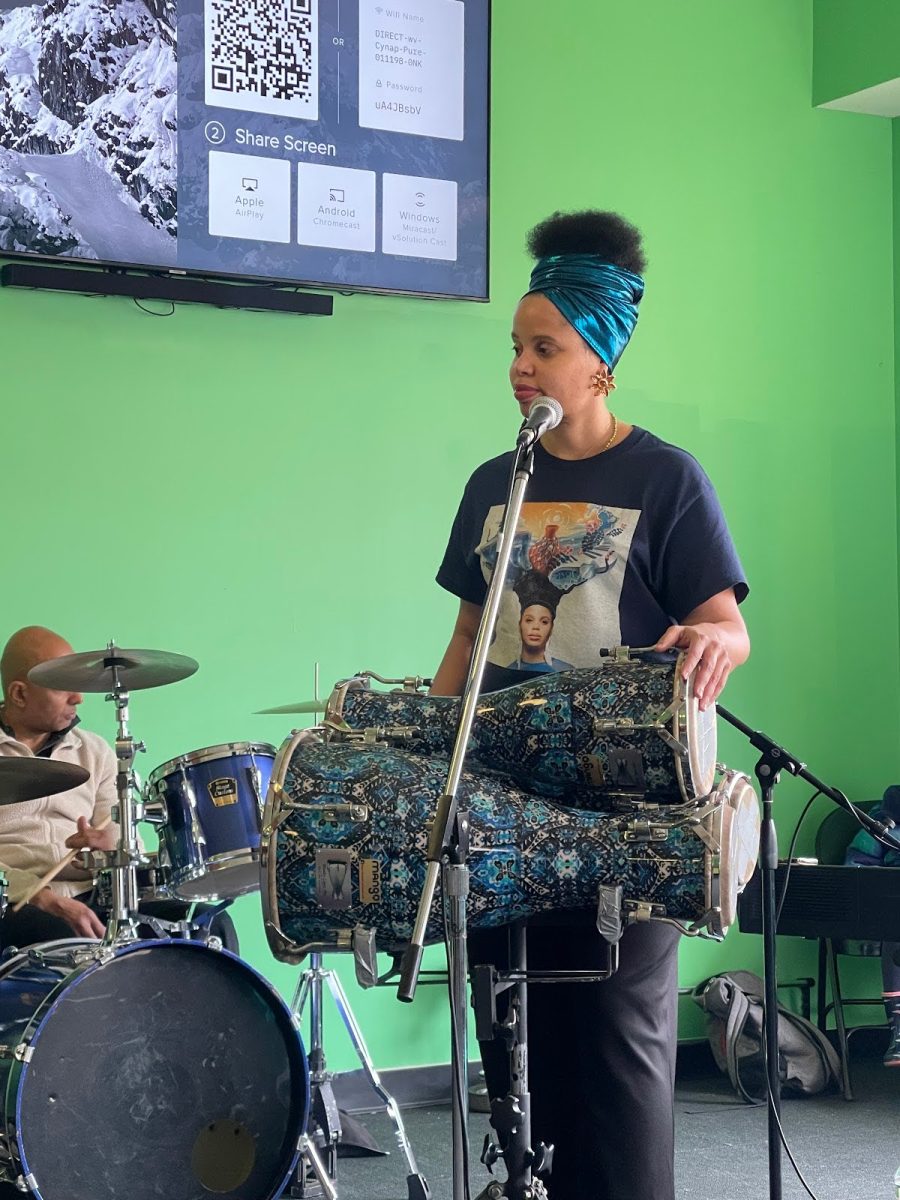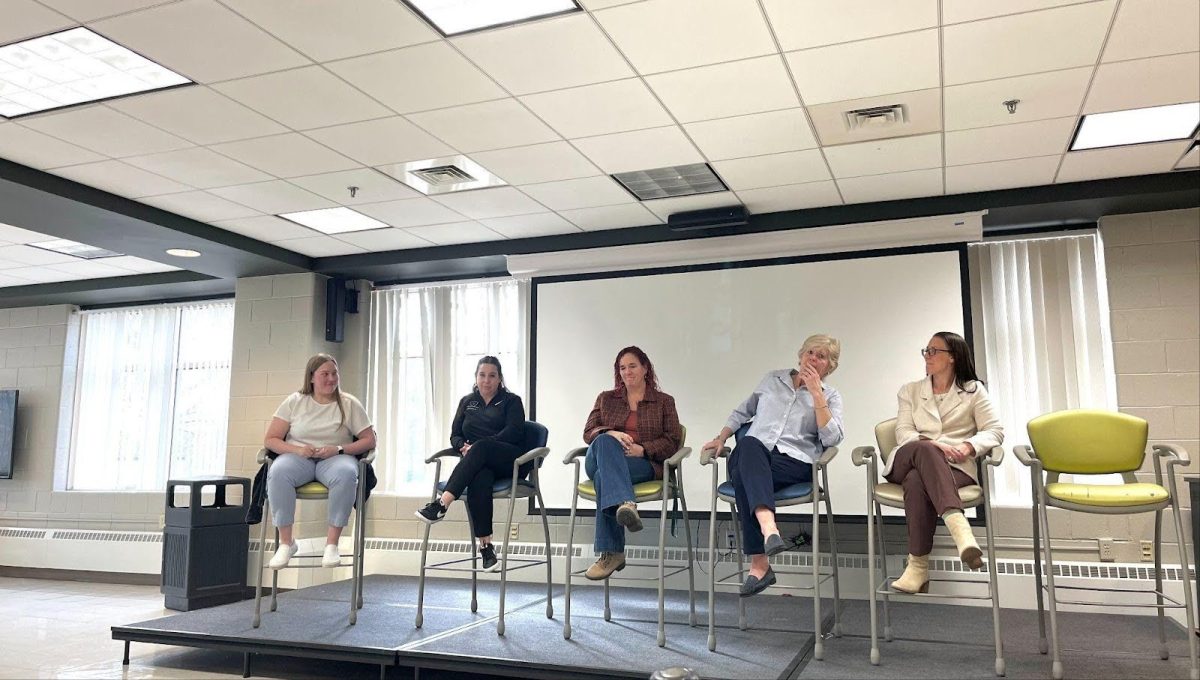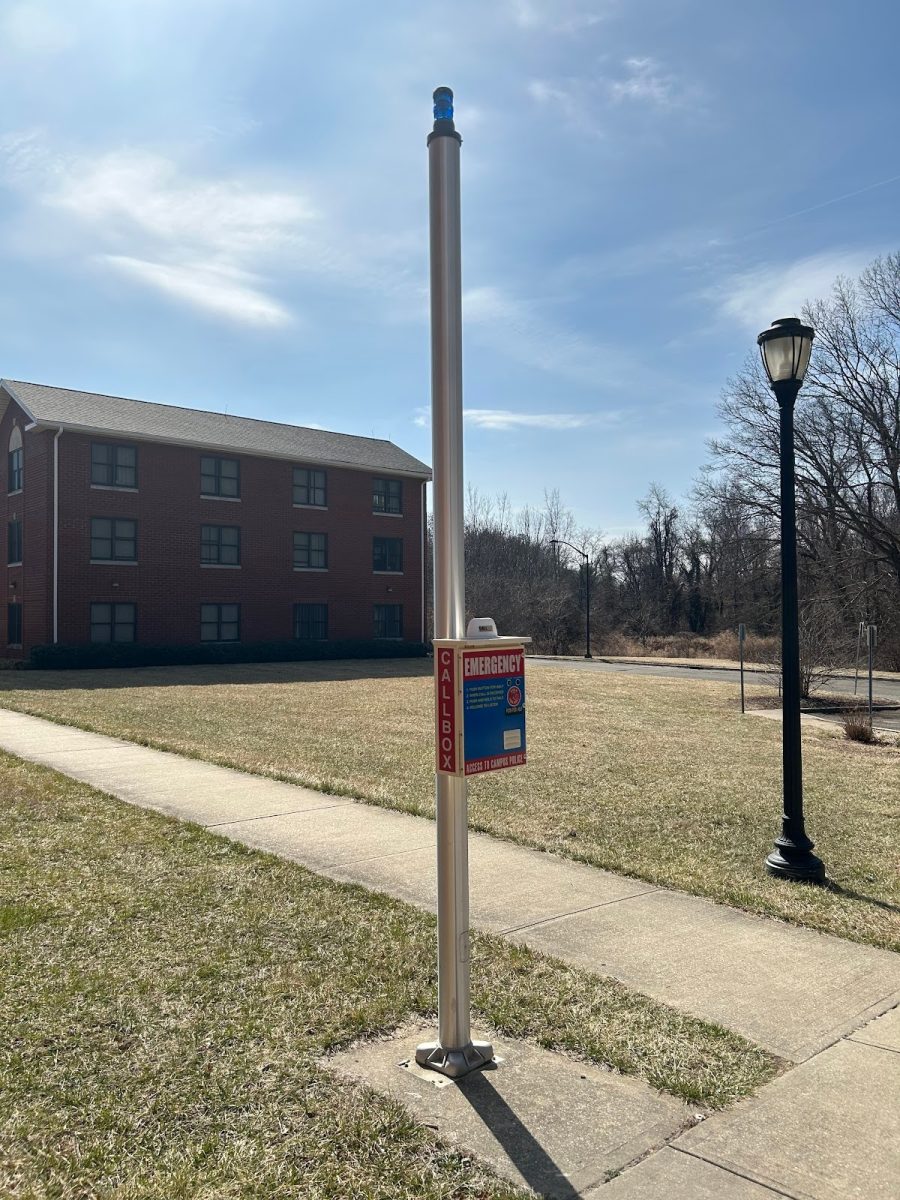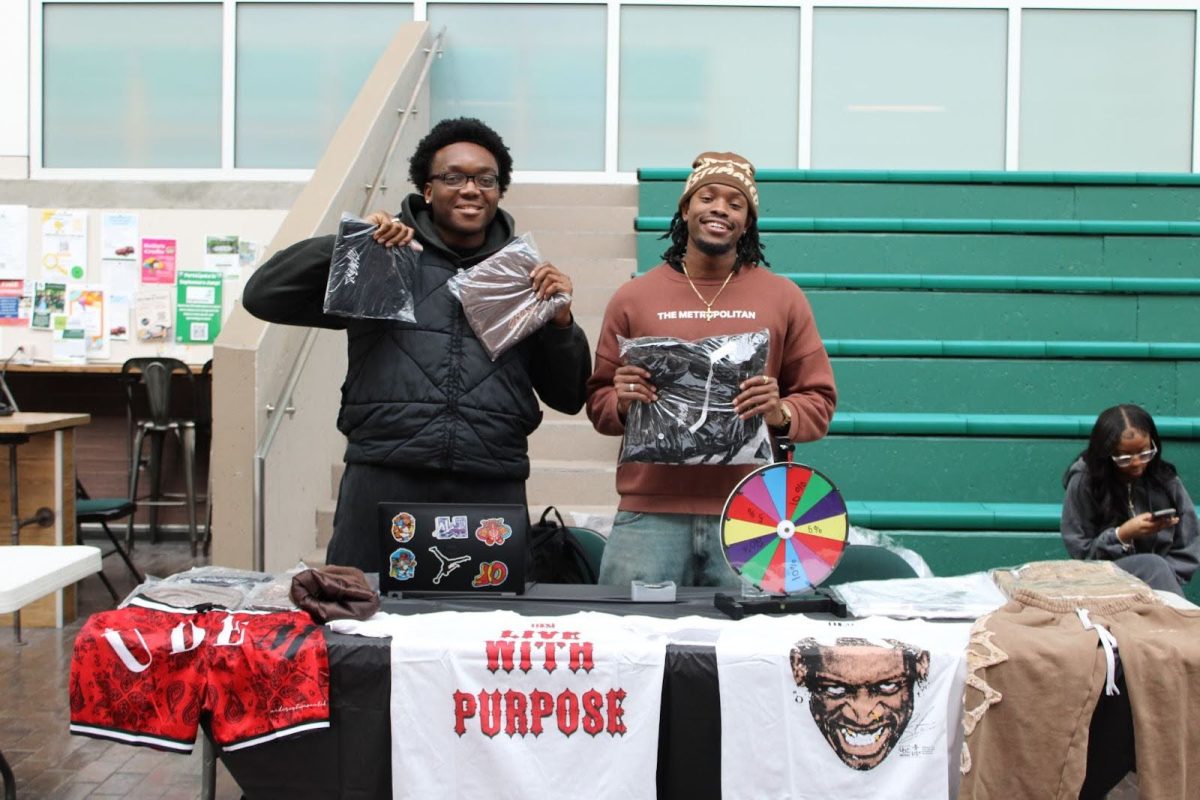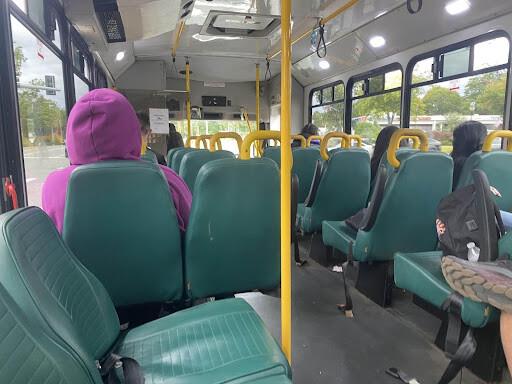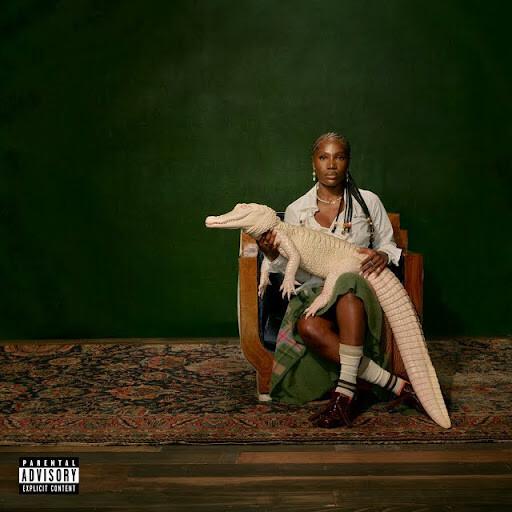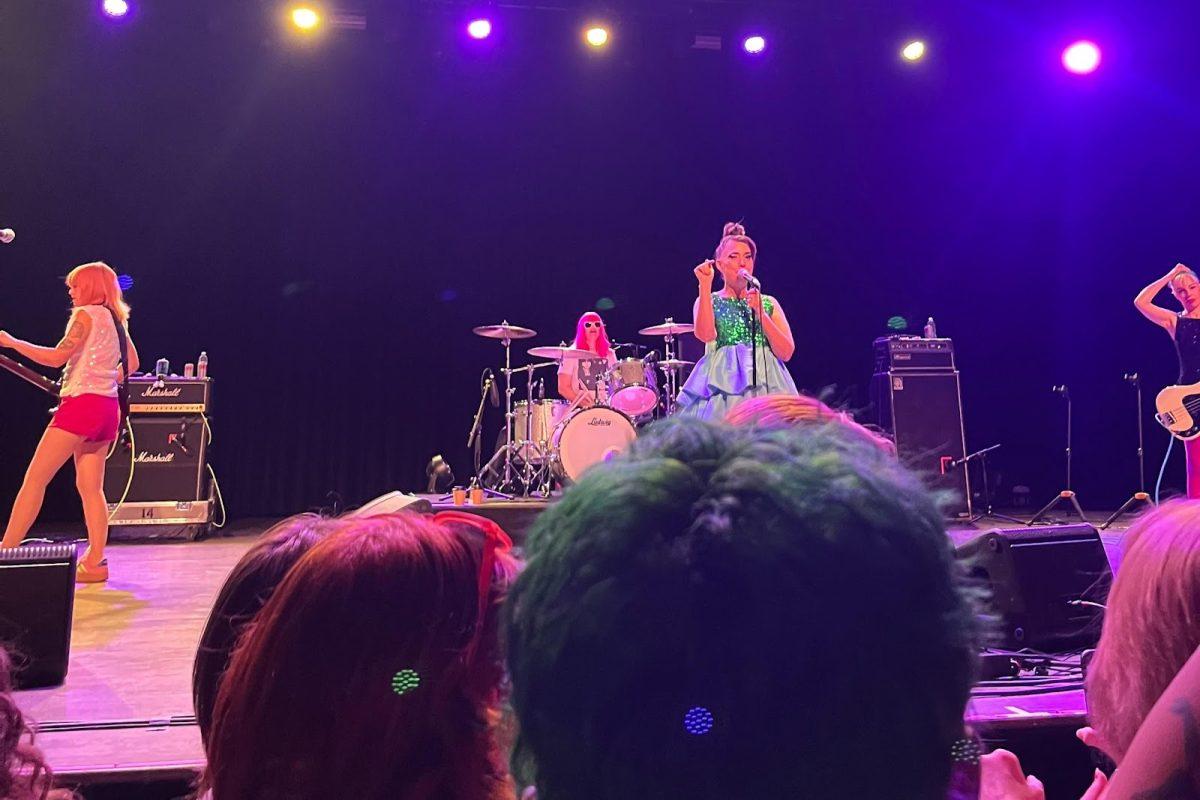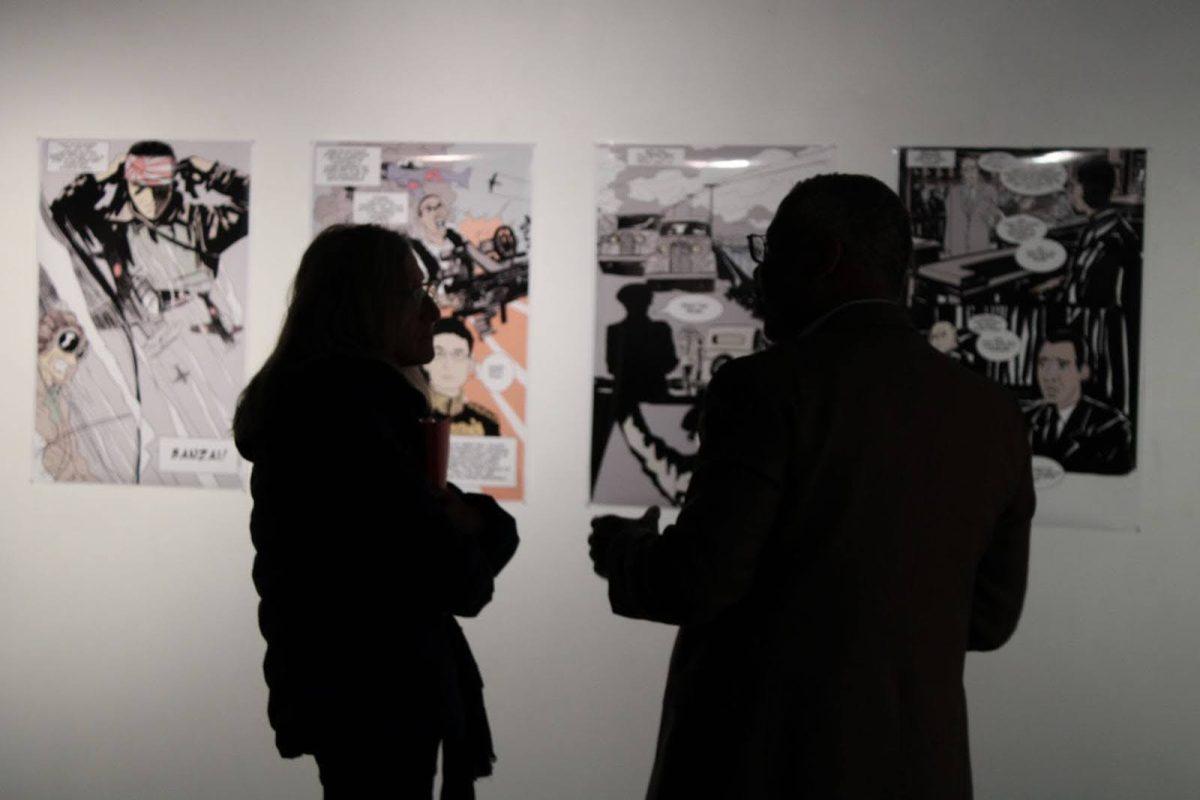
“Turning to the East: Intersecting Futures and Afro-Asian Connections in a Multipolar World” is an exhibition about Afrofuturism and Afro-Asian art, curated by Dr. Reynaldo Anderson, at the Amelie A. Wallace Gallery in the Campus Center which opened on March 27 and will continue until May 2.
Afrofuturism is based on science fiction and the African diasporic experience according to the exhibit handout. A good example of a commercial Afrofuturist piece of art would be Black Panther (2018), but if you really wanna get into it, Sun Ra’s Space is the Place (1972) is a good place to start.
Turning to the East opened with a lecture by Dr. Jeehey Kim, dance performances by Yes I Can Performing Arts Center and OW ‘s own Professor Fatima Logan-Alston, followed by an opening reception and a curator talk with a panel discussion.
On the first day of the exhibit, Dr. Jeehey Kim, author of Photography and Korea, and assistant professor of art history at the University of Arizona gave a talk on “Photography and Black Presence in Korea and Japan.”
It was a densely packed, visually superb presentation on photographers like Shomei Tomatsu, Sun Ho Moon, Joo Myung Duck and the role of Cold War politics in East Asian racism. The presentation was bookended with old sepia-toned photos by an American G.I. named Tommy. These photos represent “an amalgamation of cultures,” according to Kim. They provided a great introduction for what the rest of “Turning to the East” had to offer.
At the opening reception in the Wallace Gallery, there were heads everywhere: camera operators from the Media Innovation Center (MIC), photographers, family and friends. Gallery Director Professor Hyewon Yi welcomed everyone and introduced the dancers from the Yes I Can Performing Arts Center. These dancers performed classical Chinese dances, showcasing their immense skill and meticulousness.
OW instructor Fatima Logan-Alston’s dance performance mixed tradition with contemporary ideas – which is essentially the theme of the whole Turning to the East exhibition.
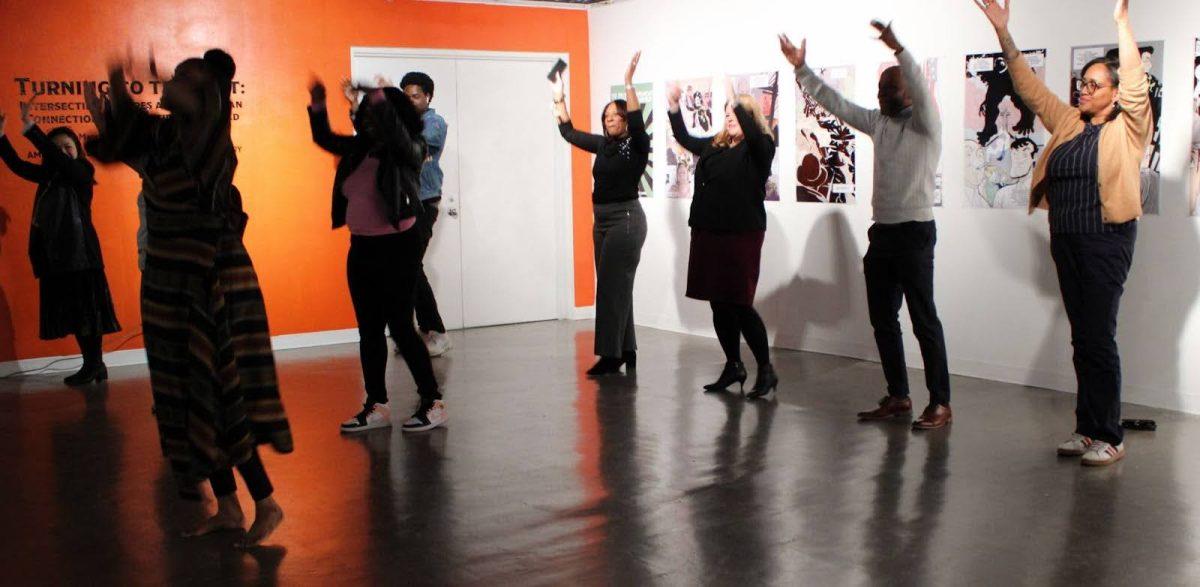
Her first dance was based on Fanga, a traditional Liberian dance associated with the earth and sky. But the real show stealer came with the second dance, “On the Verge of Becoming,” when she called for members of the crowd to participate. Crowd members were stepping and moving to the beat with Alston. While I didn’t dance (I was on duty taking photos), it gave me the energy I needed to make it the rest of opening night.
After a short coffee break, guests were guided to the center floor where curator Dr. Reynaldo Anderson and others were going to discuss Afrofuturism and the contemporary blending of Afro-Asian cultures.
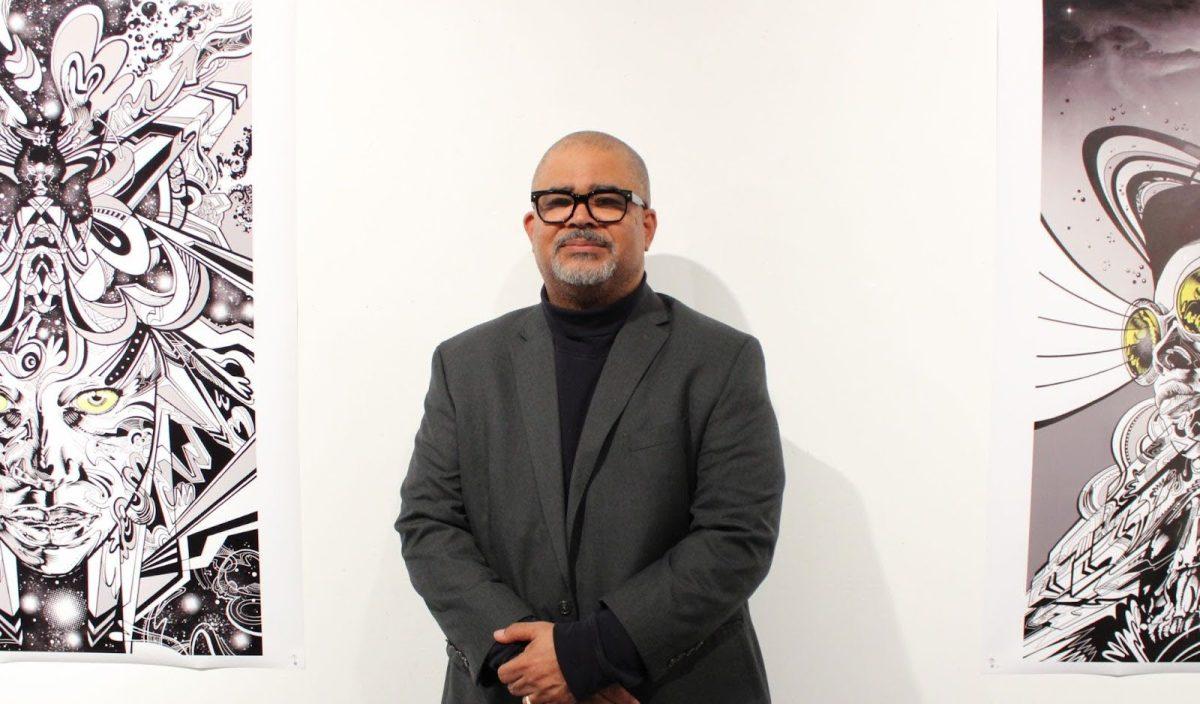
Dr. Reynaldo Anderson is an associate professor of Africology at Temple University, the co-founder and Executive Director of the Black Speculative Arts Movement, and co-edited a number of anthologies and journals focusing on Black art… and that’s just scratching the surface. He was in the Marines, stationed in different parts of Asia, where he learned the long, storied legacy of the worldwide struggle against European imperialism. He absorbed the culture, reading books like 17th century ronin Miyamoto Musashi’s Book of Five Rings.
Anderson’s panel was introduced by OW’s President Timothy Sams who discussed Black power and his interest in the exhibit’s theme. Sams closed with a thank you to everyone involved and a profound question: “Will East and West sensibility solve [Global] North and South problems?”
Gallery Director Hyewon Yi introduced the expert panelists: Dr. Ryoko Yamamoto, adjunct professor Kevin Farrell, and, of course, Dr. Reynaldo Anderson.
“I’m the descendent of angry enslaved people, who were cheering when [Civil War general] Grant burned the South down,” Dr. Anderson said. A key theme in Anderson’s discussion was the nonviolence of men like Gandhi and the violent direct action of men like Ho Chi Minh and Mao Zedong. Growing up, Anderson said, he “came out of the Black-Southern gun tradition.”
“I think about Black men as culture carriers,” said Anderson. “I remember when Micheal Jackson came to Tokyo, people were losing their minds; they were crying,” Anderson laughed. Another interesting anecdote concerned the exporting of hip-hop, but before it even had a universally recognized name,“the people said, ‘Do you have the new music?’”
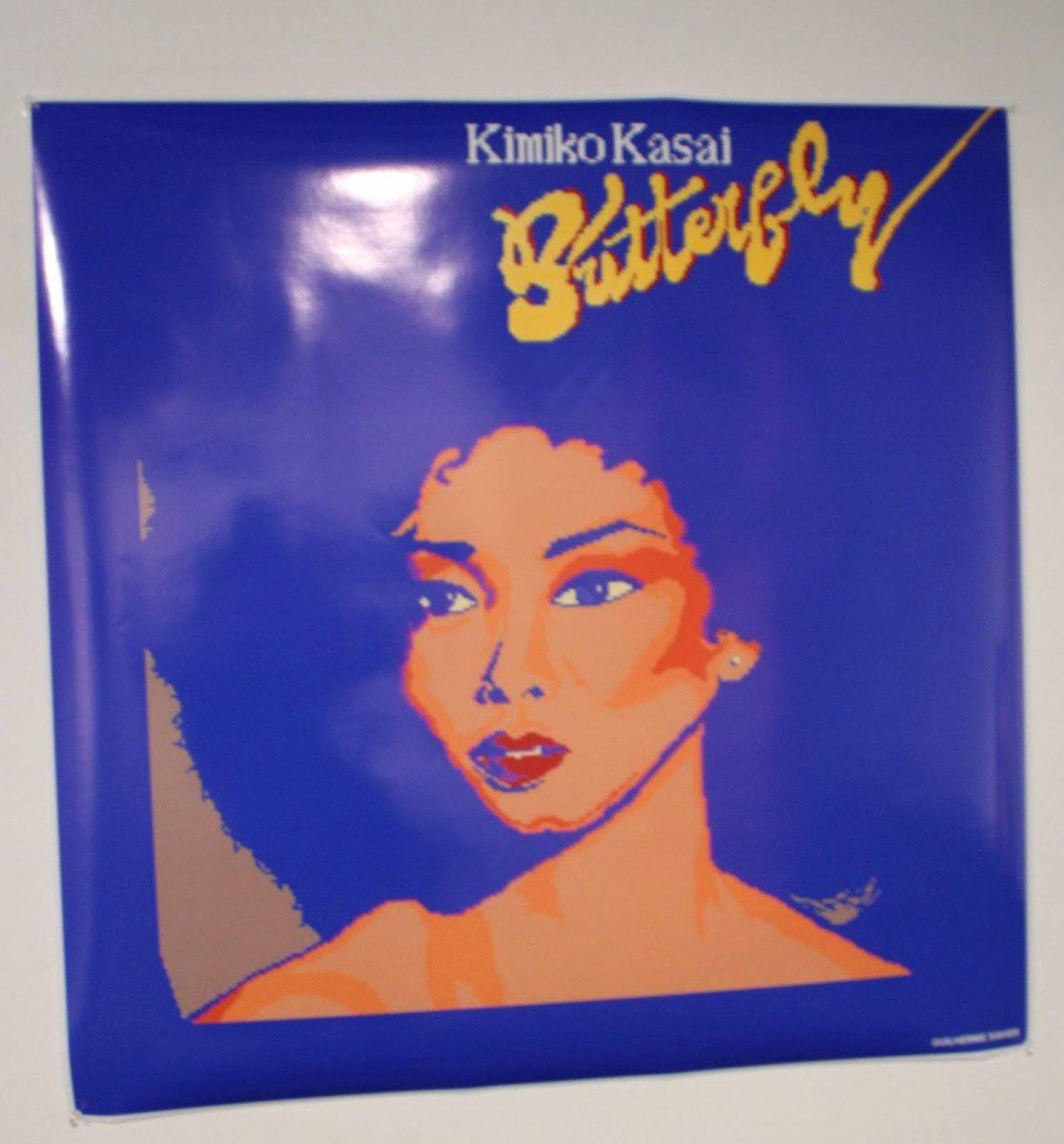
Some of the art in Turning to the East is about the meshing of musical cultures. One piece, Butterfly by Guilherme Xavier, is a pixel art version of an album of the same name by Japanese pop artist Kimiko Kasai and jazz legend Herbie Hancock. Butterfly (the album) was produced in
1979 and, according to the artist’s statement, was instrumental in the evolution of Japanese pop music.
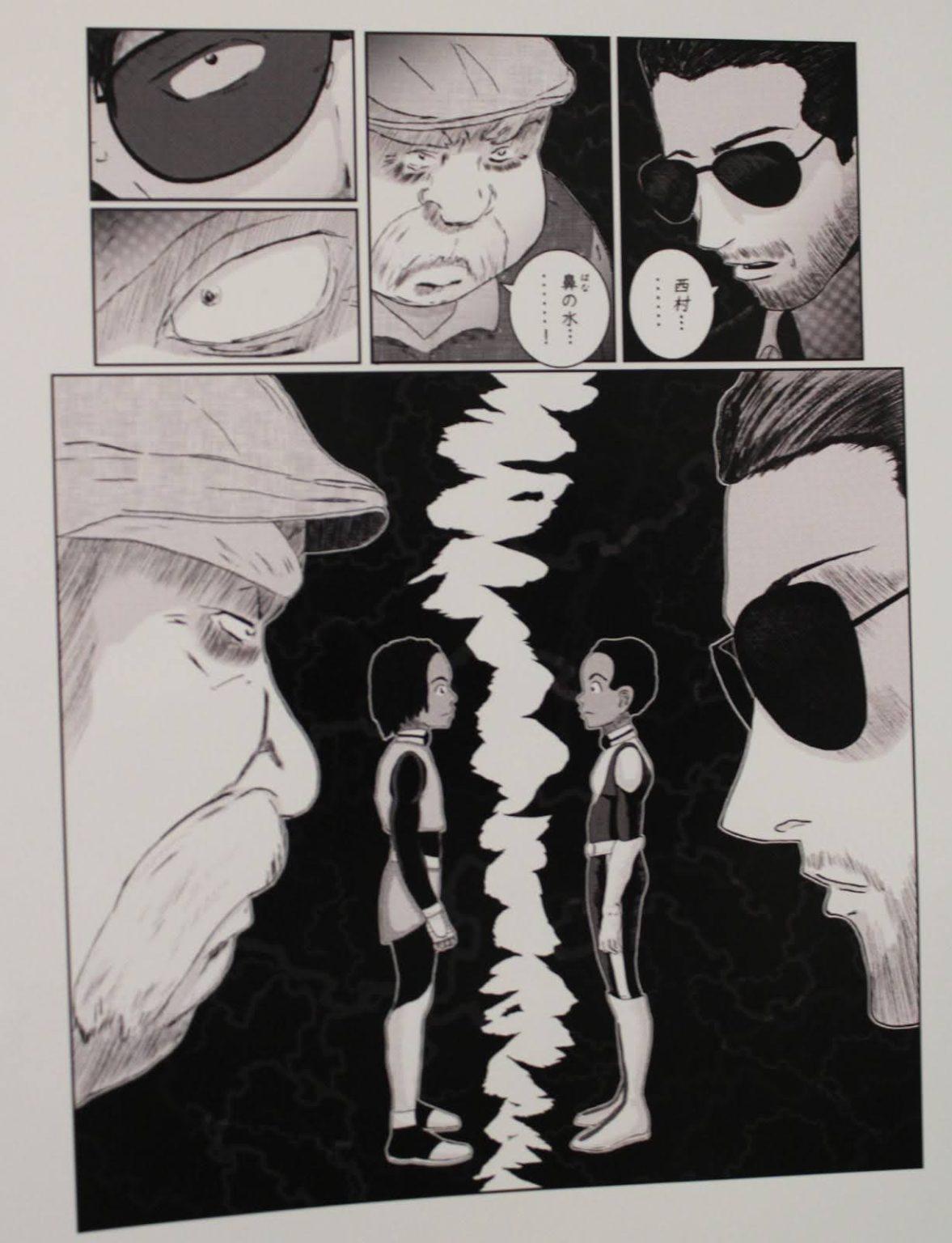
Anderson discussed Kofi Bazzel-Smith, “the first American manga master,” who created Radius, a manga set in a capitalist dystopia where boxing robots are exploited for entertainment. Bazzel-Smith is certainly a master, as we can see in his layout work.
In this page from Radius, we can draw all we need to know about the story from the visual information alone: the two larger characters are mentors to the smaller, and possibly have some history considering the intensity of their stares. That’s ‘comics 101,’ and coupled with a compelling narrative, it’s clear why this manga is a highlight of the exhibit.
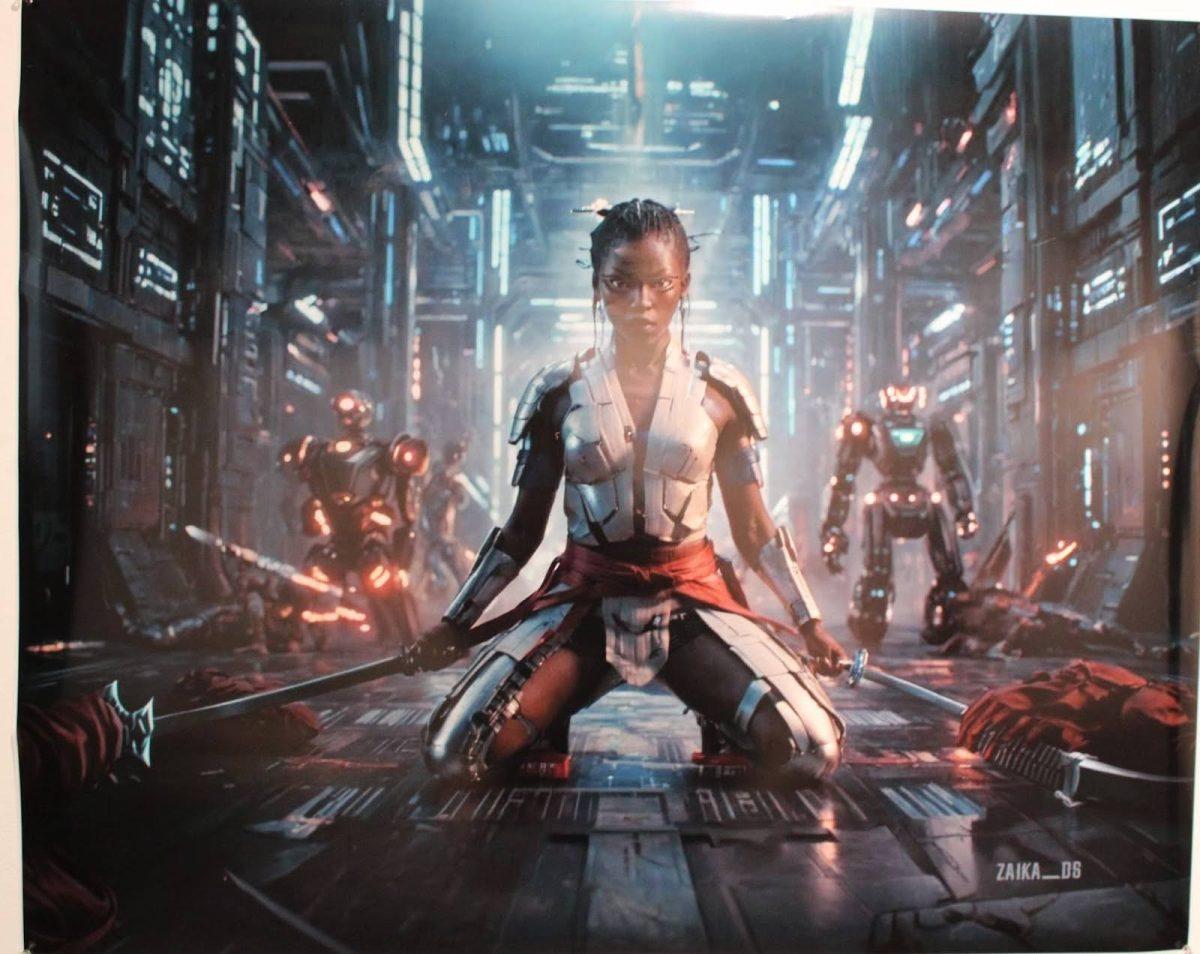
Another incredible set of images in the show are the select designs from Stacey A. Robinson, a professor and graphic design artist, created for Supreme Mathematics, a series about the Islamic Nation of Gods and Earth, which features a sect that utilizes a numerical system for self-governance and one’s greater existence. Detailed and striking, these works rely on a black and white gradient to represent the greater cosmos, and yellow to represent some great truth.
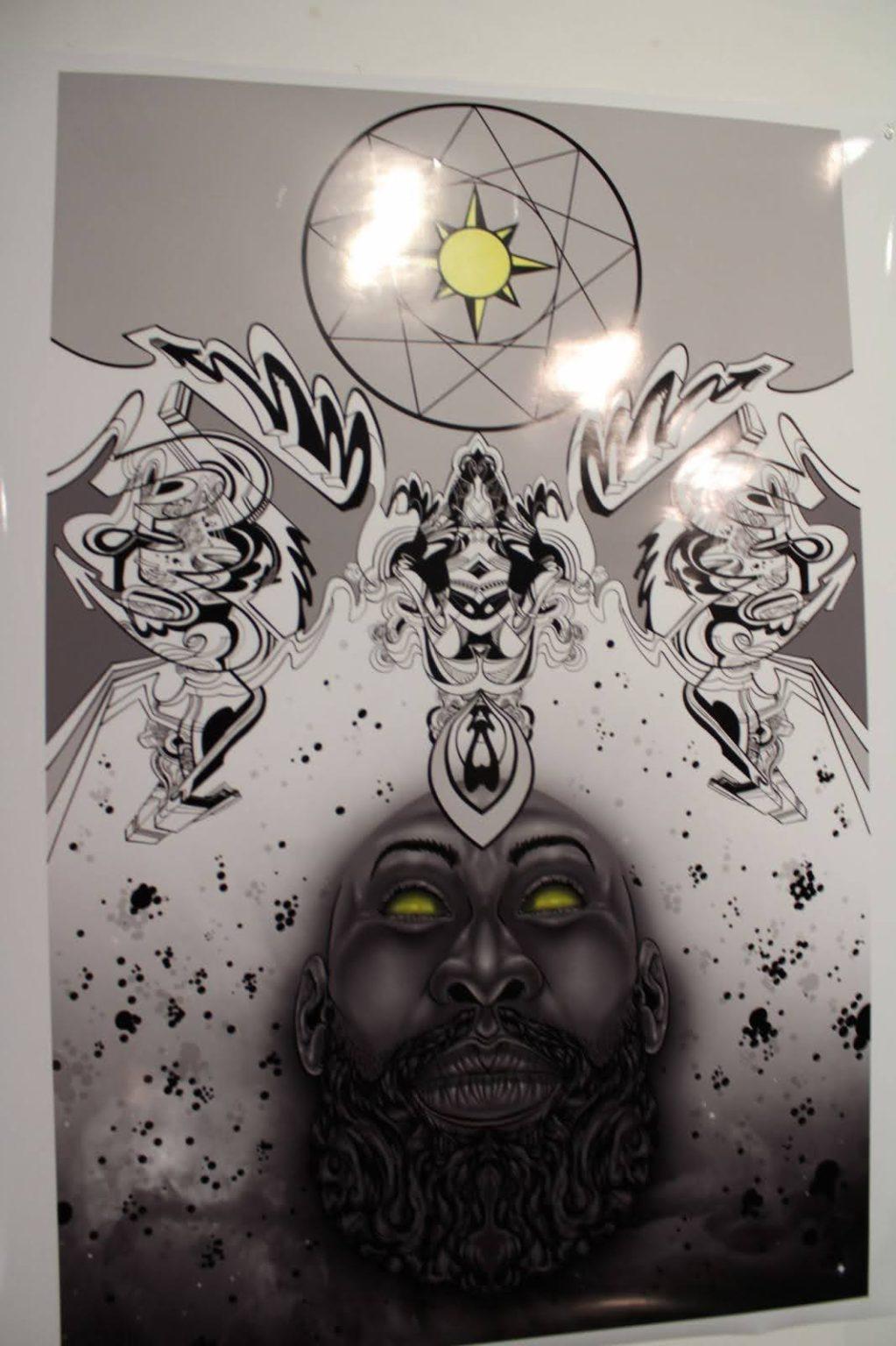
However, the exhibit wasn’t all formally brilliant manga and heady religious axioms. On the lowest floor, Zaika dos Santos’ series NKYIMU was on display, with a description of the world next to it – after global warming ravages the planet, many nations create a new space-nation to save their populations, which is under attack by corporations. High concept and ostensibly cyberpunk, what irks me about this series has to do with the way it’s expressed through A.I. generation.
Now, there’s nothing wrong with using a new, controversial technology to get interesting visual results. As it happens, the same thing happened with photography in the 1800s, when traditional painters feared for their livelihoods and dismissed what is now considered a fine art. But these pictures, caked in realism, are more or less the same thing quadrupled: cyborg-ninjas, kneeling or standing, in a gray tech-laden hangar. To put it bluntly, it struck me as lazy, especially considering the talent that surrounds it.
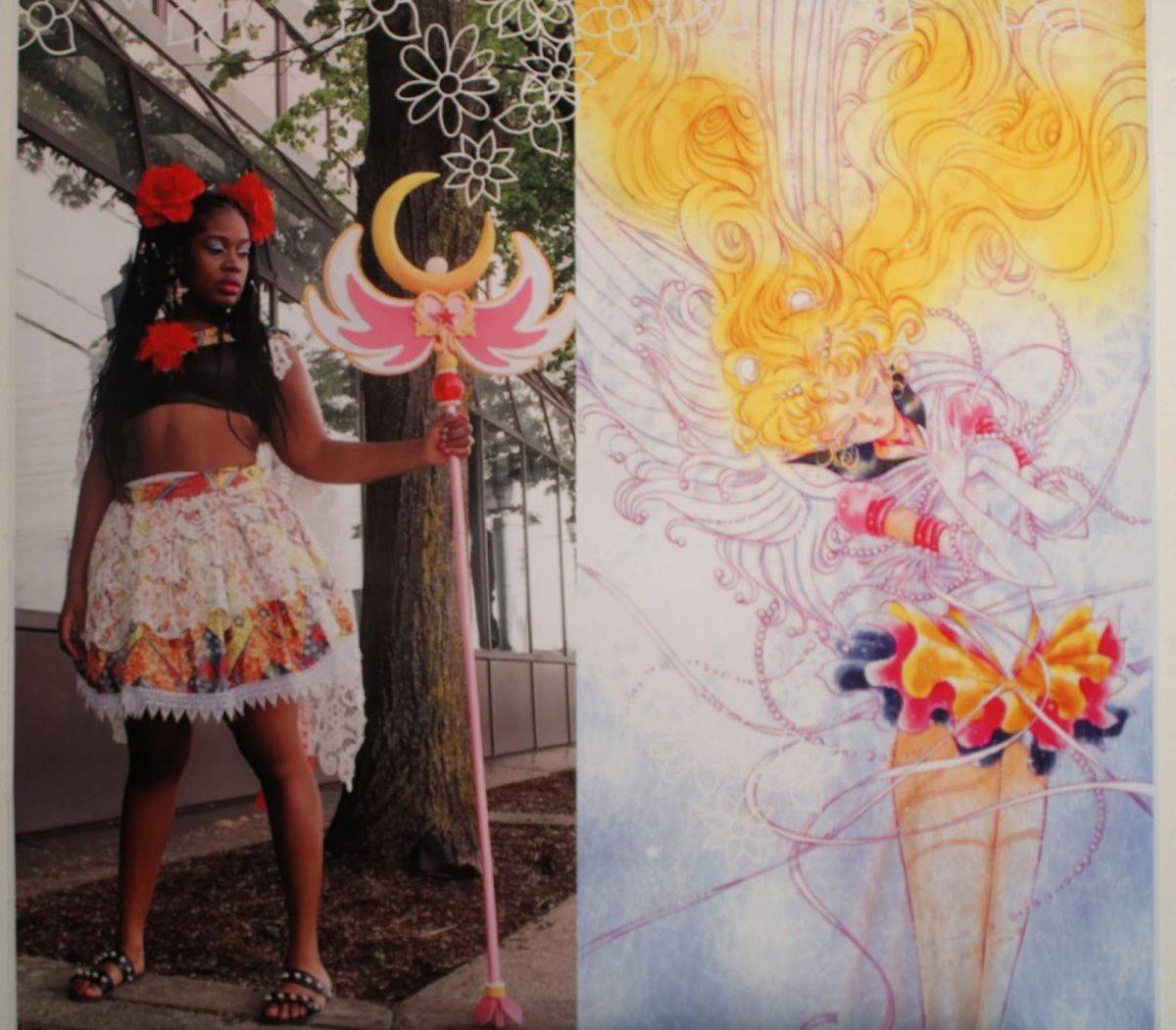
Photo: Vincent Arroyo
Another highlight of the exhibit, was unique set of images, created and designed by Lauren-Ashley Howard, focused on Black interpretations of Japanese fashion and cosplay (specifically of Sailor Moon), “This is the part of the movement [I don’t really know] because I don’t do cosplay,” Dr. Anderson laughed. Howard’s work embodies a key aspect of the Afro-Asian cultural exchange, the unfathomable popularity of anime. According to a 2024 Polygon article, roughly 42% of Gen Z surveyed watch anime every week.
Dr. Anderson ended with a half-joking, half-serious question: “Is the Afrofuturism course being taught yet?”

